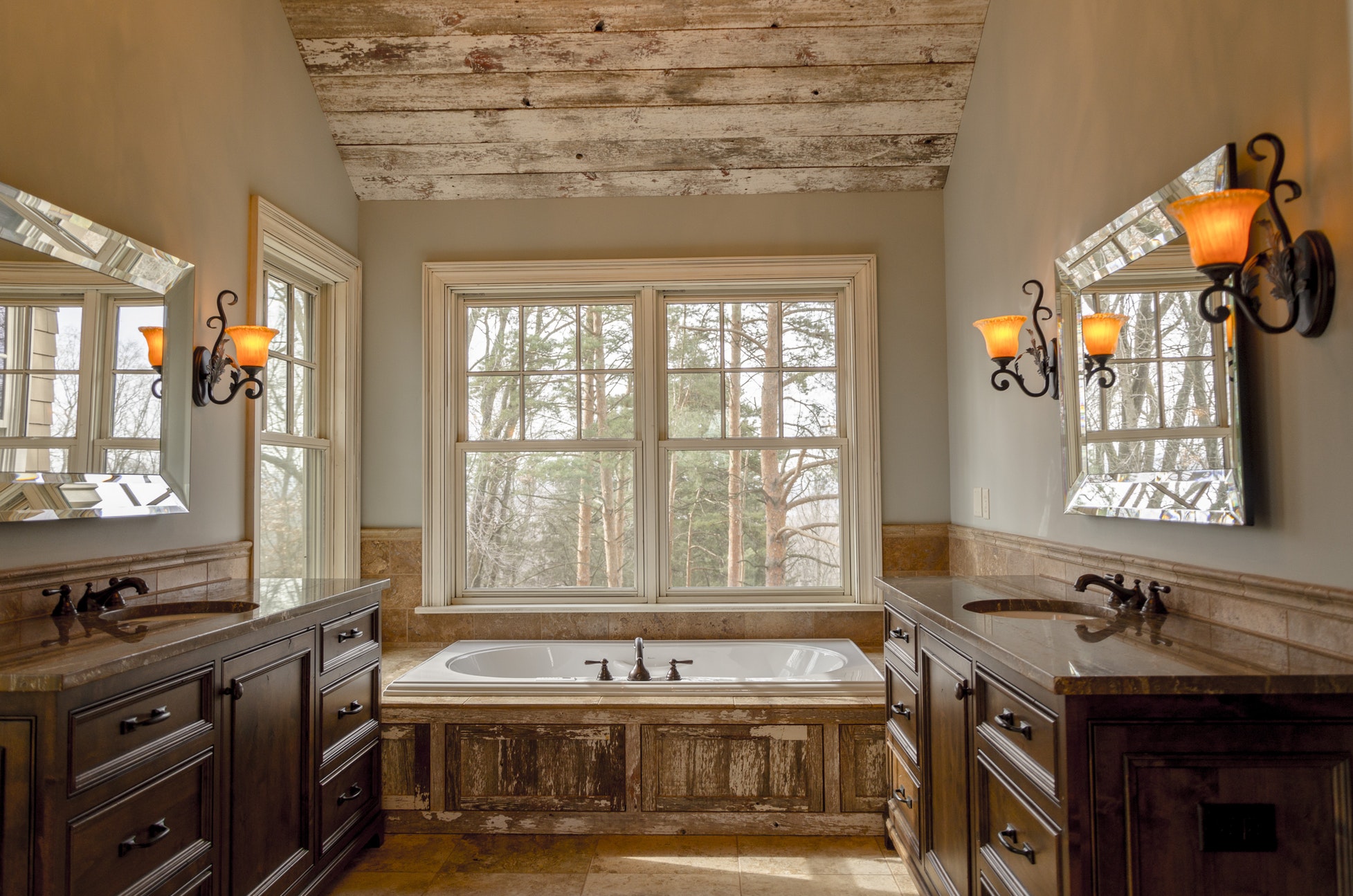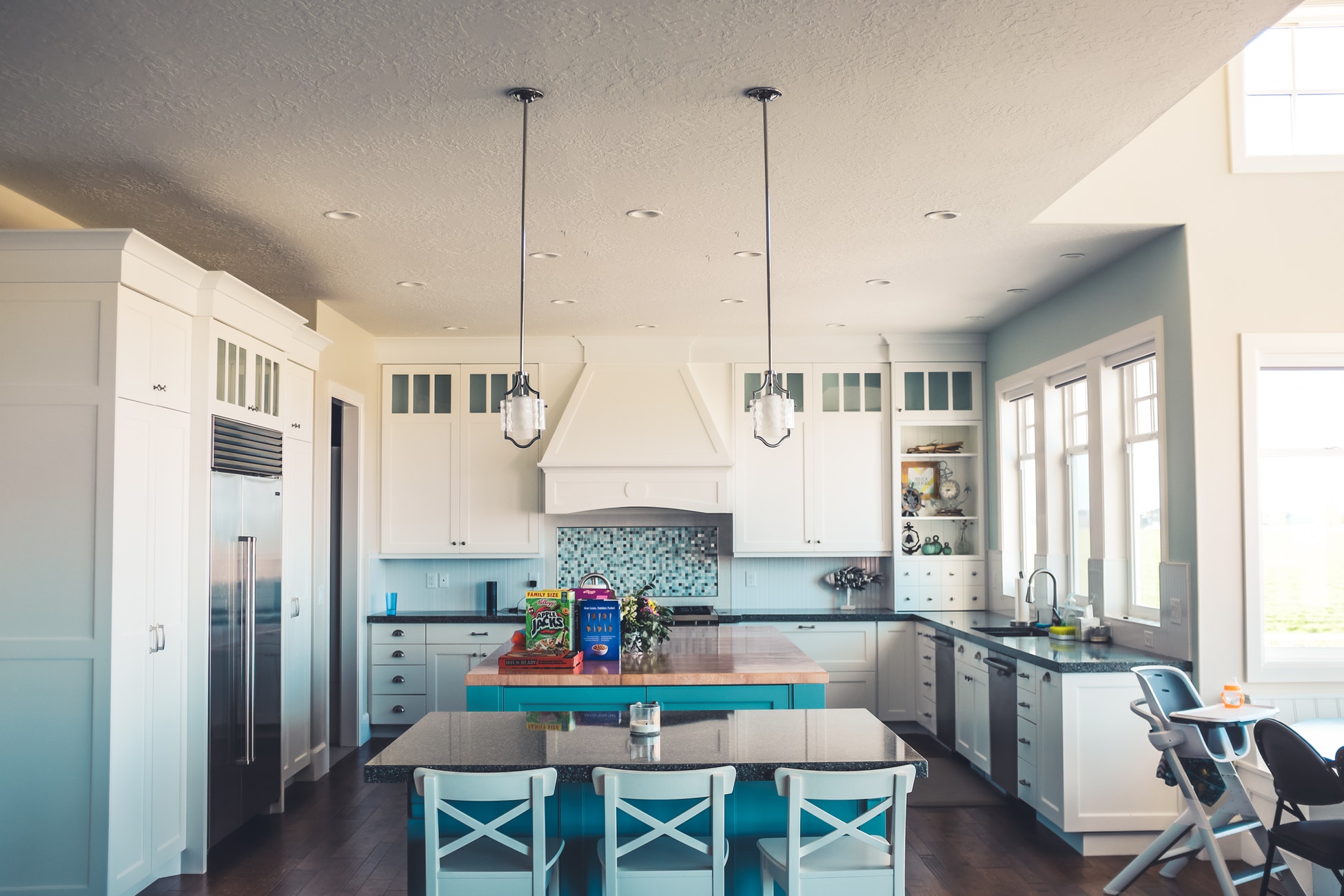
What DIY-ers need to know about the industrial kitchen trend
Unlikely to grow old quickly, the industrial kitchen trend carries with it long-lasting surfaces and finishes, stainless steel appliances, large clean spaces, and a strong feeling of hygiene and efficiency. Just what you want in a kitchen.
Rather than giving you some kind of prescriptive ‘recipe’ for the perfect industrial kitchen design, we thought you might find this list of considerations useful for creating your own unique version of this tried-and-tested design trend.
How much space do you have for your industrial kitchen design?
Space. It may still be the final frontier, but it’s also one of the first considerations when contemplating an industrial kitchen design.
Size matters, and the industrial kitchen trend relies on size for some of its effect. Many of the appliances are large, the island in the middle will take up more floor space than you think, and the almost-requisite pendant lamps need height to be effective.
One of the most common errors made by DIY-ers is to try to fit too much design into a space too small. With the industrial kitchen trend, proportion is nine-tenths of success.
To avoid problems with space, you could create a scale drawing of your kitchen using squared paper and a ruler. A bird’s eye view is usually the easiest to draw. You can then cut out cardboard shapes—also scaled—of the various fixtures and fittings you’re considering for your new kitchen. Fit them into the drawing and see if you really will have the space. You don’t want to have to squeeze past appliances, burn your hand on the hob when you turn on the tap, or have to close one cupboard to open another.
Scale drawings don’t help much with vertical space, but it’s safest to consider the design ‘rule of thirds’. For example, measure the height of your kitchen from wall to ceiling. Your work surfaces and your island (if you’re having one) need to be around one-third of the height of your kitchen.
910mm is a ‘standard’ height for kitchen surfaces, so for the best industrial kitchen trend design, you could loosely consider that your ceiling height should be no less than three metres.
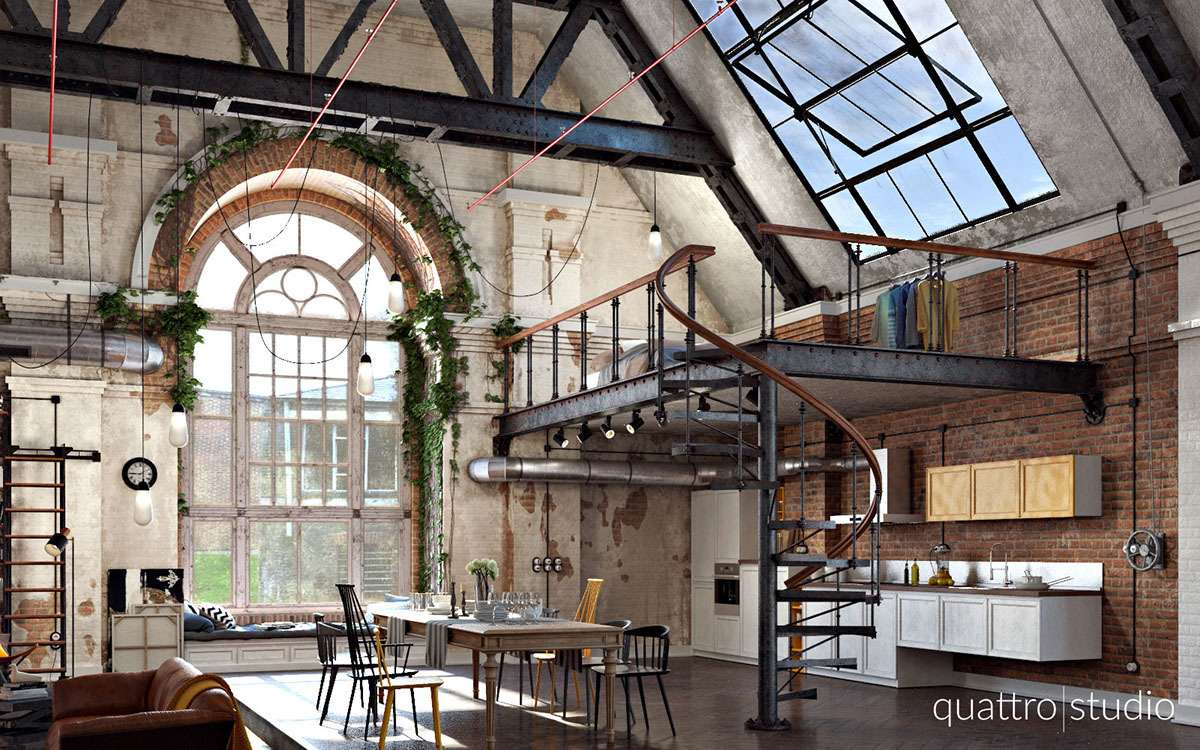
What industrial materials do you want to incorporate?
Materials are the base of your design, literally the building blocks of your kitchen at a molecular level. We’ll state this now: chintz, frills, and bright coloured moulded plastics are not compatible with the industrial kitchen trend. Great. So what will work?
The main materials you’ll want to consider are those that emulate actual industrial design. We’re talking the sorts of tiles you get in a New York subway. Concrete flooring, or reclaimed wood boards, reminiscent of old factories or warehouses. Parquet flooring if you can. Exposed brick on walls, or even on features, such as a built-in breakfast bar, or the base of your island or peninsular. Copper or antique brass fittings are highly recommended, especially for those who want to bring a vintage feel to their industrial kitchen, but stainless steel will also fit right in.
These under-appreciated materials provide the base of your kitchen’s atmosphere, with muted, understated colours, and an emphasis on the practical.
You can also change it up a little, without going overboard. For example, quartz counter tops may not be the latest thing in standard industrial design, but those little sparkles will give your space an uplift.
What fixtures and appliances are central to the industrial kitchen trend?
Seriously, what do you need in your kitchen? The sink rather goes without saying. Not to mention the fridge, freezer, dishwasher, wall oven, extractor fan, and hob.
But every kitchen has that, industrial kitchen trend or no, so what makes the difference here?
Our advice is to think bold. Pitch your game as high as you can afford. Stainless steel tends to be the name of the game when it comes to industrial kitchen appliances, but you don’t have to follow blindly. Brightly coloured, well-designed gadgets can work beautifully against the greys and browns of industry, acting as a smart accent of personality within the wider effect.
Splashbacks and surface savers—even counter tops can provide you with further opportunity to engage with your inner child, and choices—all as valid as each other—range from bright primary colours to mirrored steel.
And don’t forget, detail is everything when it comes to design. Whatever your unique fittings in your kitchen space, take a step back and try to consider how it will look in your new industrial kitchen. Big, angular, shiny, practical, all of these are great ways to describe industrial designs. If your new fitting or appliance isn’t one of these things , you might want to reconsider for the sake of a congruent design.
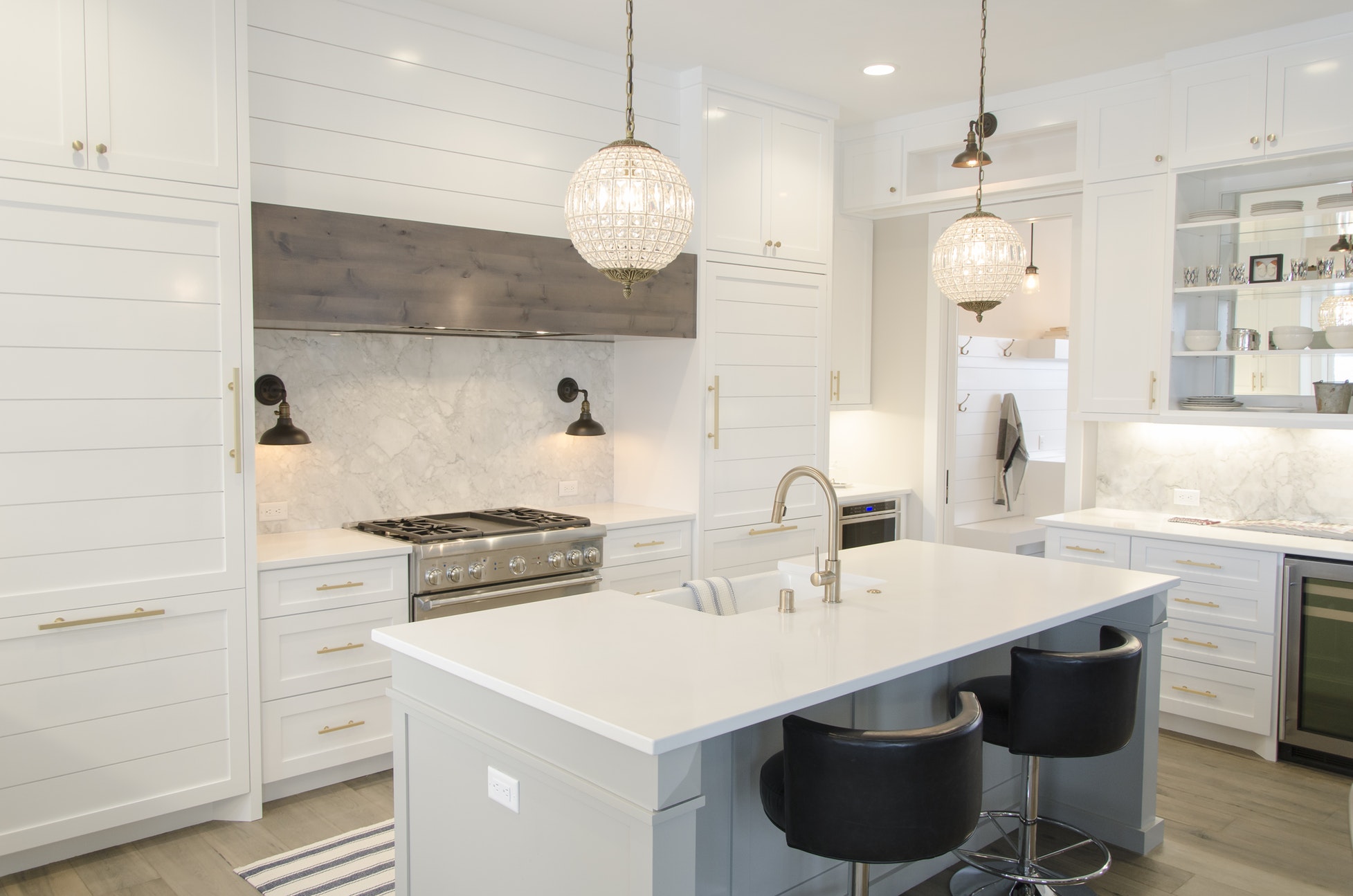
What colour schemes do you fancy?
As mentioned under materials, colour schemes for industrial kitchens tend towards the muted, more base colours for the majority of the space. Blacks, browns, grey, terracotta (brick red), steel, none of these would be out of place in an industrial kitchen.
But a kitchen that only incorporates these backdrop colours may fade in the memory of visitors, without the occasional splash of an accent colour to break it up.
One of the ways in which you can match up accent colours to the overall scheme is to create mood boards. These can be done physically, with a large piece of backing card and lots of pictures and colours from various sources, or you can create a virtual one in an app like Pinterest.
Think about how the colour scheme makes you feel, whether it’s a bit depressing, or if it’s too bright and funky. You’re looking at moods, not details, but this is important, because you’ll use the kitchen every day. It has to reflect what you want it to.
Dark kitchens are very much in vogue at the time of writing, and these may not necessarily disappear over night. However, you might have an even greater need for an accent colour or for white, if you choose a dark scheme overall.
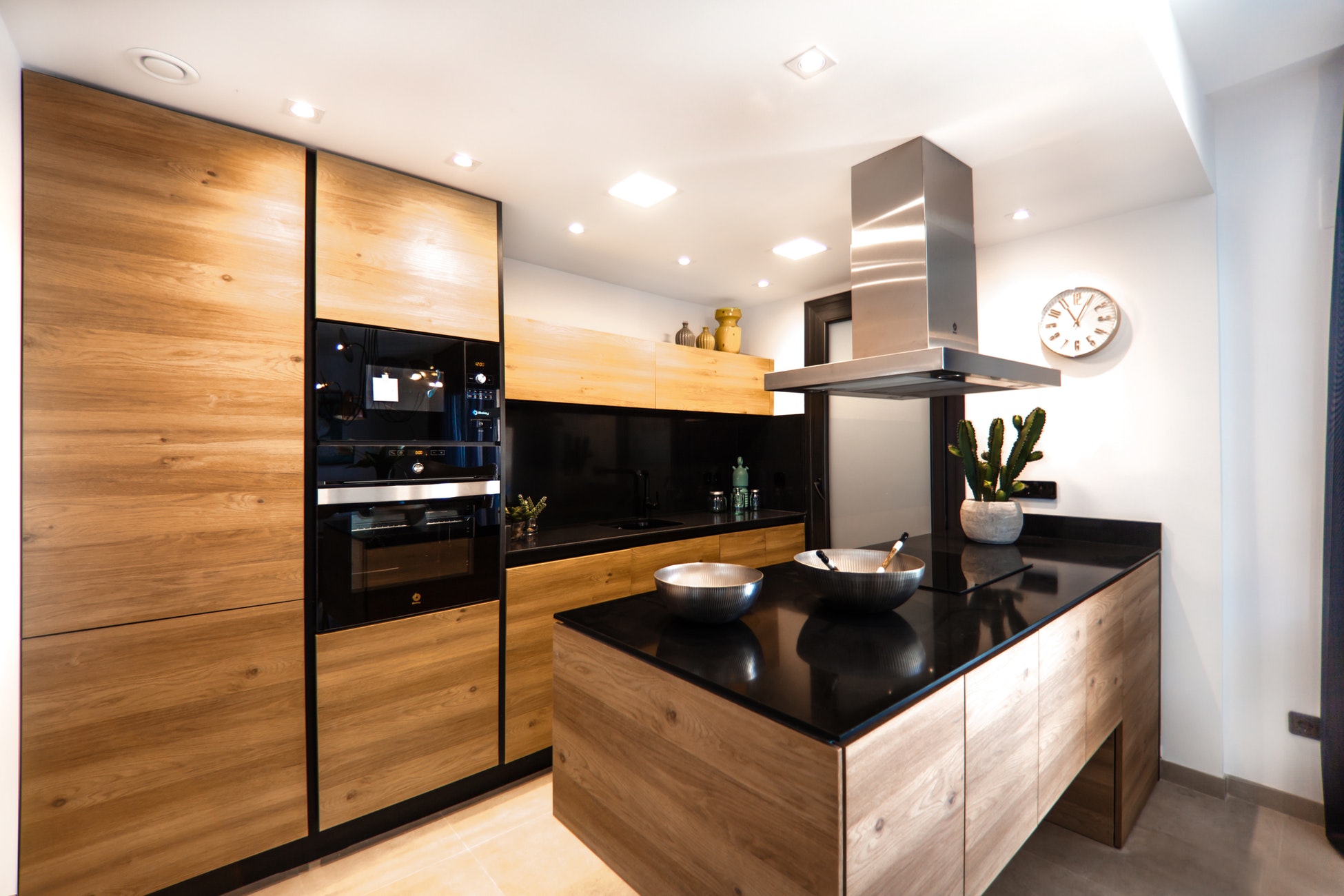
What lighting will be the most useful and attractive?
Dark or light, your kitchen will need to be lit. There’s an array of industrial lighting that has been tailored to the domestic market, with minimalist designs that just … well, work.
The ubiquitous pendant lamp is often one of the main features in any industrial kitchen design, thanks to the rise of the kitchen island. Hanging almost directly from the ceiling, three pendants in a row, or one large one, could work just as well, depending on how much air space you have in the room.
Your other features will help you choose the materials for the casing of the lamps. Polished nickel, stainless steel, copper, and even matt black are all respectable members of the lighting palette.
However, pendants aren’t for everyone, not least the fact that they work best from a properly high ceiling.
For this reason, you might also want to think around spot lights, wall sconces, and artfully arranged under-cupboard LED lighting, to ensure your working space is as well-lit as possible.
Don’t forget natural lighting! The sunlight that hits your kitchen space can be invited in through large steel-framed windows, skylights, and cunningly placed portholes, and is—hands down—the best light to work with in any capacity.
All these things and much, much more, are central to creating the right design for your kitchen before you put any of it into practice. The bigger you think, the more costly the mistakes can be without careful planning, so while winging it may seem attractive, you’re more likely to finish successfully if you pay attention to what has already been said about the industrial kitchen trend.
Still need some ideas? Check out our directory for more ideas that work with the industrial kitchen trend.
Share This Article
WOULD YOU LIKE TO SEE YOUR HOUSE FEATURED ON FINISHED.IE?
Please click on the button bellow and fill the Featured House submission form.


